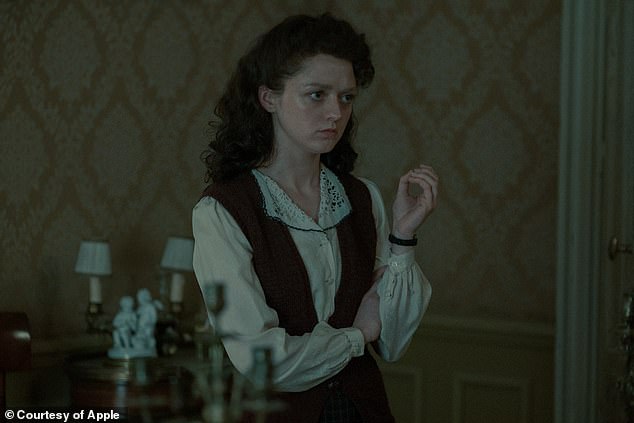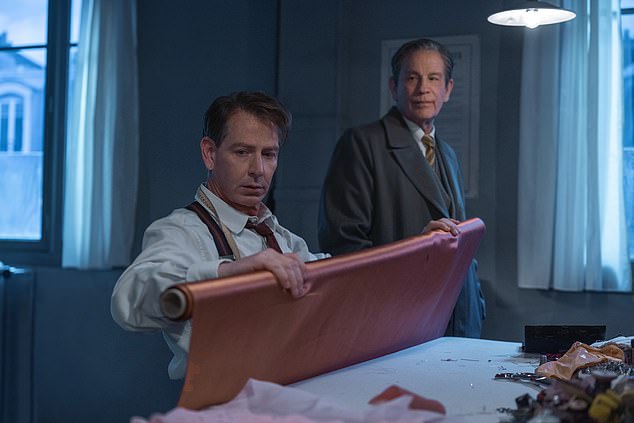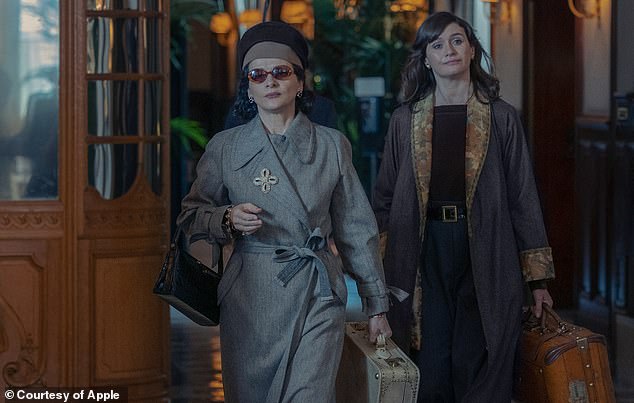THE NEW LOOK (Apple TV+)
During the four years that Paris was occupied by Nazi Germany, the elegant city, famous for its artisans, ateliers and haute couture designers, was reduced to curfews, food trucks and trigger-happy soldiers patrolling every corner.
It is in this stressful context that The New Look, the new hit Apple TV+ series, a drama “inspired by true stories”, sets the lives of fashion legends Coco Chanel and Christian Dior.
Dior, a then-unknown young designer with a sister secretly working for the French Resistance, works in Lucien Lelong’s atelier, reluctantly creating dresses for fashionable Nazi wives and mistresses. Chanel, already famous, is taking refuge in the grandest hotel in Paris, the Ritz, with her Nazi lover. They both survive as best they can.
Juliette Binoche as Coco Chanel, left, and Emily Mortimer as her close friend Elsa Lombardi in the Apple TV+ series The New Look

Maisie Williams plays Catherine Dior, the sister of designer Christian who has been imprisoned in the infamous Ravensbruck concentration camp in Germany.
Bringing fashion to the screen has always been difficult: its particular alchemy of creativity, originality and hunger, superimposed on the need for commercial success, is difficult to pin down. In this case, it fits beautifully, one might say perfectly, into a larger story about the challenges and compromises of war.
The New Look isn’t the only on-screen portrait of the feverish fashion industry out there right now. You can choose from glamorous offerings: High & Low: John Galliano, a documentary about the designer’s fall from grace after an inexplicable anti-Semitic outburst, will be released in theaters next month; The excellent Kingdom of Dreams, the story of Tom Ford and Alexander McQueen, is available to stream on Sky, along with the Disney Plus miniseries Cristóbal Balenciaga.
However, the first episode of The New Look, released yesterday, isn’t really about fashion. The closest we get to the skill and passion of clothing design are the lavish opening credits that evoke the intensity and detail of the workshop.
The gripping story of Dior (played by Ben Mendelsohn) desperately trying to free his sister Catherine (Maisie Williams), who has been imprisoned in the infamous Ravensbruck concentration camp, is juxtaposed with the luxurious world of Chanel, described by a general Nazi, when meeting at a ball, as “bigger than any Hollywood star.”
Juliette Binoche’s Chanel convinces, although without being exact. The actress is more beautiful than Chanel, whose appearance was what the French call jolie laide (pretty and ugly): more gamine and less feminine.
It wasn’t Chanel’s beauty that attracted powerful men (such as the Duke of Westminster, with whom she had an affair, her friend Winston Churchill and the Nazi high command), but her confidence, her incredible style and the fact that, for Chanel, sex It was a currency like everything else.
Binoche is softer and less rigid than the original, and sometimes slumps in her chair in a way that a real woman would never have done.
By the time the first episode begins, Chanel’s business was closed (and remained closed throughout the war), but it would have been useful to take a look at how it had already defined the contemporary woman’s wardrobe: baggy trousers, tailored tailoring. soft shoulders, beautiful jewelry. Mendelsohn’s Dior, however, is completely different from the real Dior, who was a plump, round-faced young man who became fashionable after his career as an art gallery owner failed when his father ran out of money to support him. .

Ben Mendelsohn, left, plays Christian Dior, a then-unknown young designer working in the atelier of John Malkovich’s Lucien Lelong, right.
The actor portrays Dior’s general physical discomfort and shyness, but gives us not even a trace of the intellectual power and budding creative genius that meant that, when he died suddenly of a heart attack in 1957, the House of Dior was earning 20 million dollars a year. year: an astonishing sum for the time.
The New Look brilliantly evokes the Paris of the time: both the rooms richly decorated with scarlet Nazi banners and the dirty cobblestone streets and tunnels of the Resistance.
Many of the locations represented are still those of today’s fashion world: in particular the Ritz, which is the center of fashion during Paris Fashion Week, while several of the grand buildings with their magnificent stone staircases house enduring names like St Laurent, Dior and Chanel.
The New Look is a visual feast, but, more importantly, it is a lesson in the decisions that anyone in wartime – even the seemingly most privileged – faces to survive.
The first three episodes of The New Look are now available on Apple TV+. Subsequent episodes will be released every Wednesday until April 3.


